
How to Use MT3608: Examples, Pinouts, and Specs
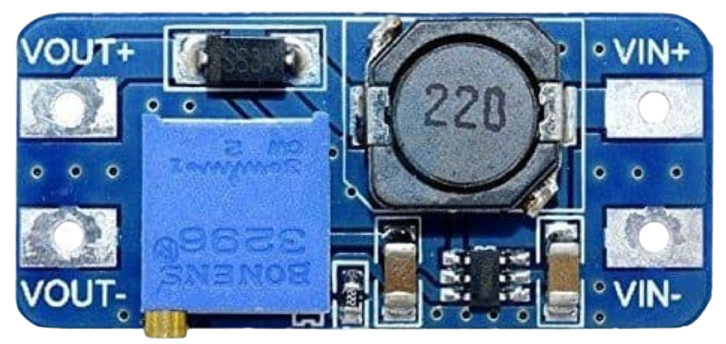
 Design with MT3608 in Cirkit Designer
Design with MT3608 in Cirkit DesignerIntroduction
The MT3608 is a high-efficiency step-up (boost) DC-DC converter designed to increase an input voltage to a higher output voltage. It is widely used in applications where a stable, higher voltage is required from a lower voltage source, such as in battery-powered devices. The MT3608 is compact, cost-effective, and highly efficient, making it a popular choice for hobbyists and professionals alike.
Explore Projects Built with MT3608
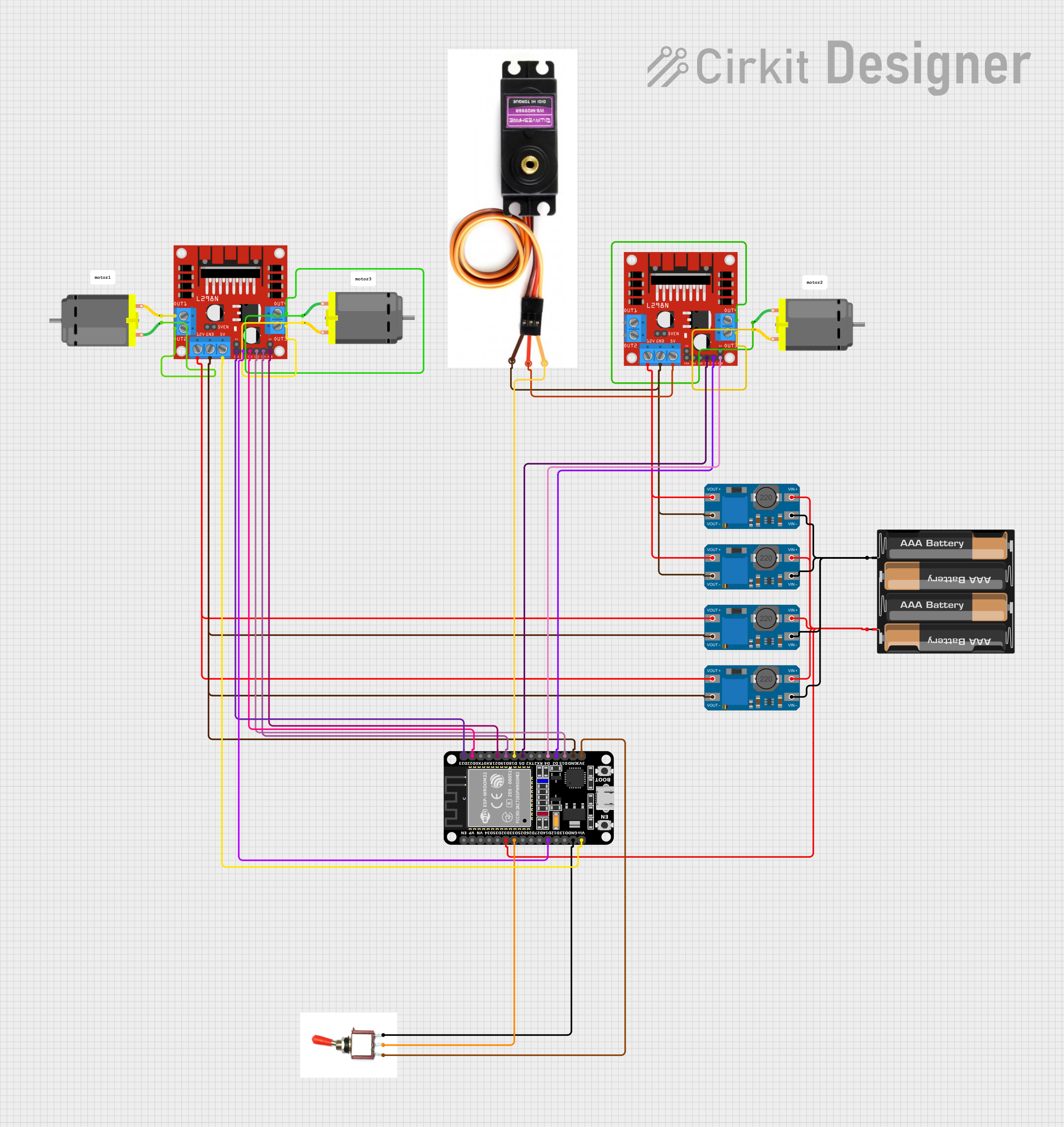
 Open Project in Cirkit Designer
Open Project in Cirkit Designer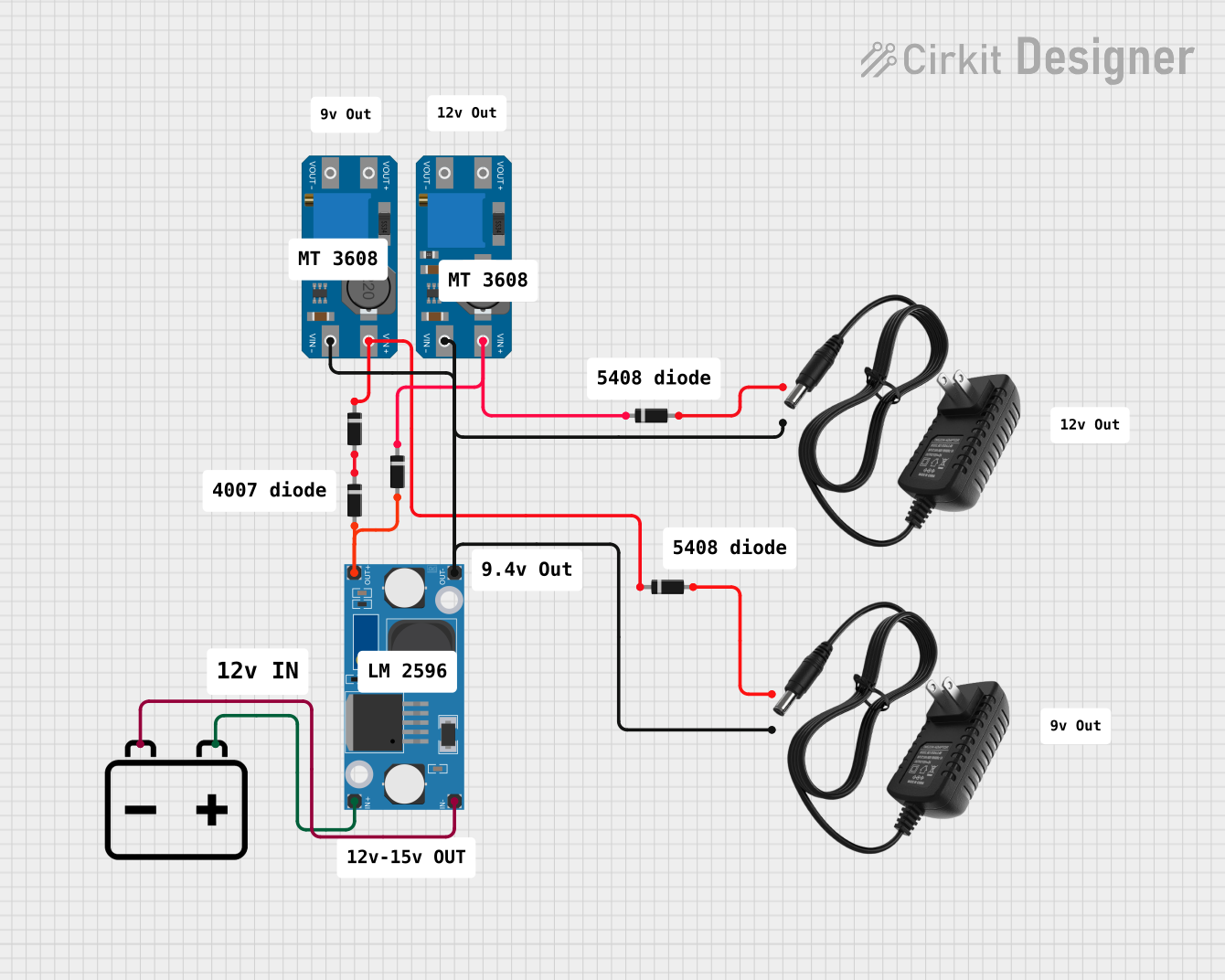
 Open Project in Cirkit Designer
Open Project in Cirkit Designer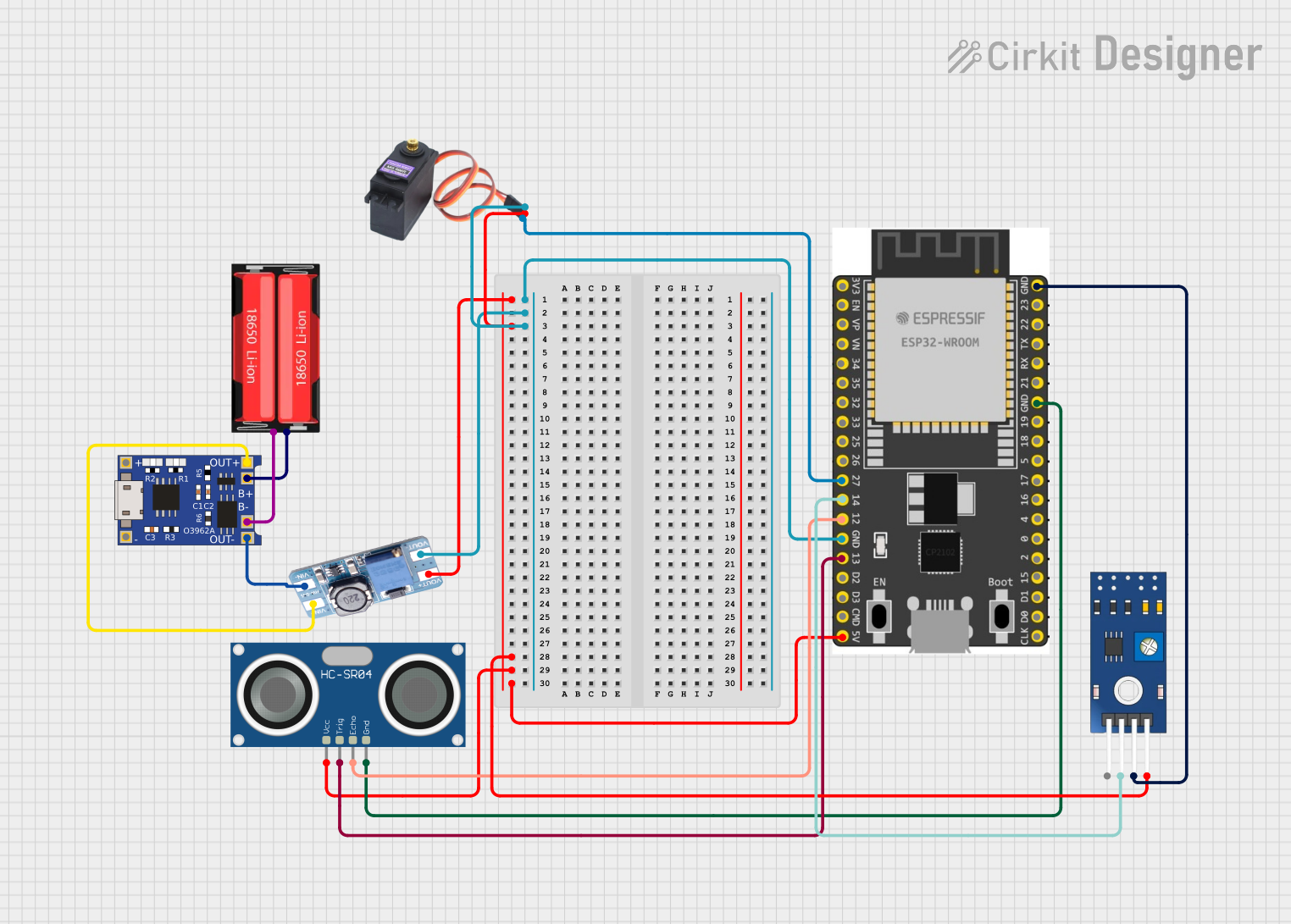
 Open Project in Cirkit Designer
Open Project in Cirkit Designer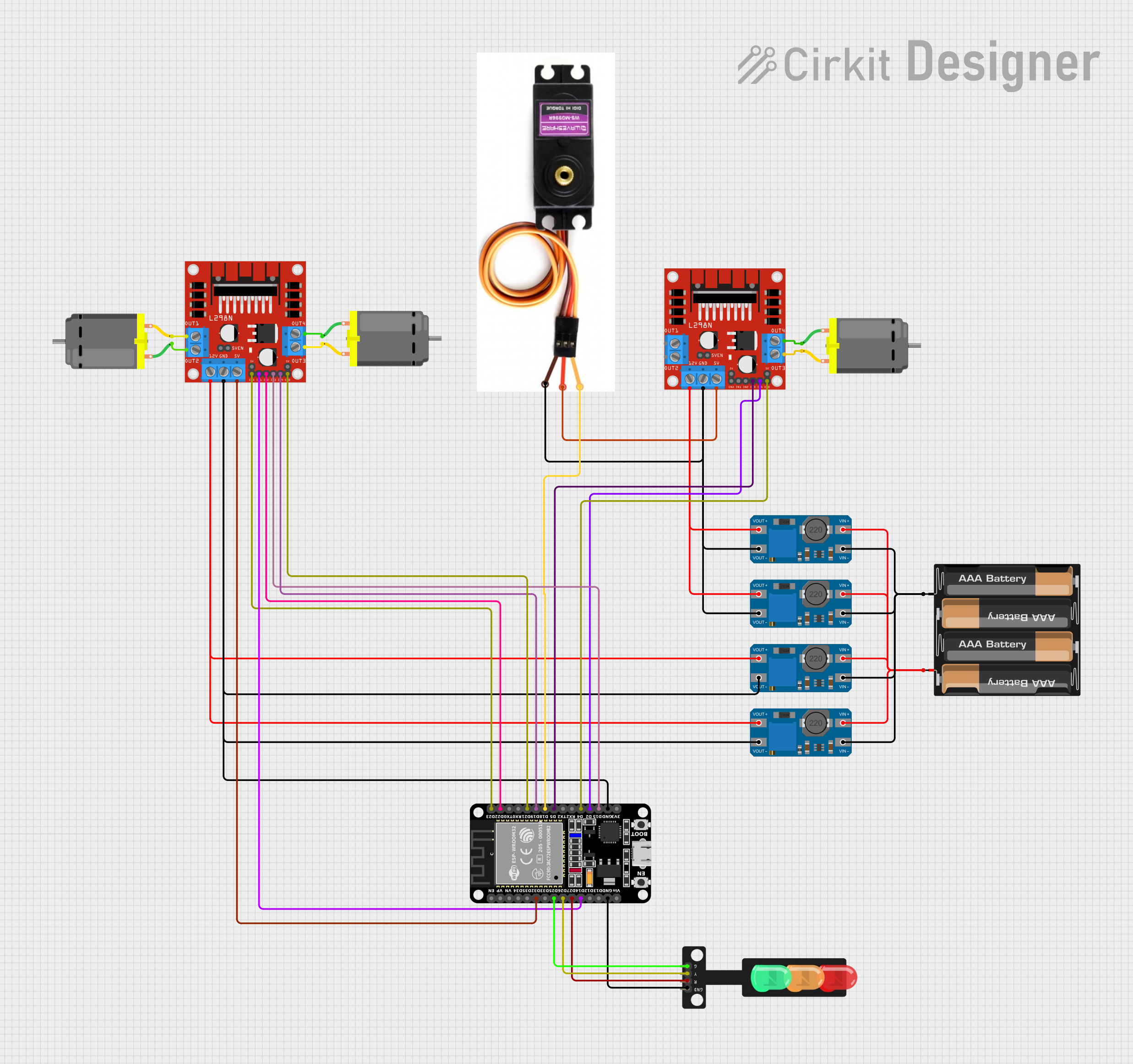
 Open Project in Cirkit Designer
Open Project in Cirkit DesignerExplore Projects Built with MT3608

 Open Project in Cirkit Designer
Open Project in Cirkit Designer
 Open Project in Cirkit Designer
Open Project in Cirkit Designer
 Open Project in Cirkit Designer
Open Project in Cirkit Designer
 Open Project in Cirkit Designer
Open Project in Cirkit DesignerCommon Applications
- Powering LEDs, sensors, and microcontrollers from low-voltage batteries
- Portable electronics and battery-powered devices
- Solar-powered systems
- DIY electronics projects requiring voltage conversion
Technical Specifications
The MT3608 is available as a module or as an IC. Below are the key technical details:
Key Specifications
| Parameter | Value |
|---|---|
| Input Voltage Range | 2V to 24V |
| Output Voltage Range | Up to 28V (adjustable) |
| Maximum Output Current | 2A (dependent on input voltage) |
| Efficiency | Up to 93% |
| Switching Frequency | 1.2 MHz |
| Operating Temperature | -40°C to +85°C |
Pin Configuration (MT3608 IC)
| Pin Number | Pin Name | Description |
|---|---|---|
| 1 | SW | Switching node (connects to inductor) |
| 2 | GND | Ground |
| 3 | FB | Feedback pin (used to set output voltage) |
| 4 | EN | Enable pin (active high, enables the converter) |
| 5 | VIN | Input voltage supply |
| 6 | VOUT | Output voltage (connects to load) |
Pin Configuration (MT3608 Module)
| Pin Name | Description |
|---|---|
| VIN | Input voltage (connect to power source) |
| GND | Ground |
| VOUT | Output voltage (connect to load) |
| ADJ | Adjustable potentiometer (sets output voltage) |
Usage Instructions
How to Use the MT3608 in a Circuit
Connect the Input Voltage:
- Connect the positive terminal of your power source to the
VINpin. - Connect the negative terminal of your power source to the
GNDpin. - Ensure the input voltage is within the range of 2V to 24V.
- Connect the positive terminal of your power source to the
Set the Output Voltage:
- Use the onboard potentiometer (on the module) to adjust the output voltage.
- Turn the potentiometer clockwise to increase the output voltage and counterclockwise to decrease it.
- Use a multimeter to measure the output voltage at the
VOUTpin while adjusting.
Connect the Load:
- Connect the positive terminal of your load to the
VOUTpin. - Connect the negative terminal of your load to the
GNDpin.
- Connect the positive terminal of your load to the
Enable the Converter:
- If using the MT3608 IC, ensure the
ENpin is pulled high to enable the converter.
- If using the MT3608 IC, ensure the
Important Considerations
- Input Voltage: Ensure the input voltage is within the specified range (2V to 24V). Exceeding this range may damage the module or IC.
- Output Voltage: Do not exceed the maximum output voltage of 28V.
- Current Limit: The maximum output current is 2A, but this depends on the input voltage and the efficiency of the circuit. Exceeding this limit may cause overheating or damage.
- Heat Dissipation: For high-power applications, consider adding a heatsink to the module to improve heat dissipation.
- Inductor Selection: If using the MT3608 IC in a custom circuit, choose an appropriate inductor value (typically 4.7µH to 22µH) based on your application.
Example: Using MT3608 with Arduino UNO
The MT3608 can be used to power an Arduino UNO from a low-voltage battery. Below is an example:
- Connect a 3.7V Li-ion battery to the
VINandGNDpins of the MT3608 module. - Adjust the potentiometer to set the output voltage to 5V.
- Connect the
VOUTandGNDpins of the MT3608 to the5VandGNDpins of the Arduino UNO.
Here is a simple Arduino code to blink an LED:
// Blink an LED connected to pin 13 of the Arduino UNO
void setup() {
pinMode(13, OUTPUT); // Set pin 13 as an output
}
void loop() {
digitalWrite(13, HIGH); // Turn the LED on
delay(1000); // Wait for 1 second
digitalWrite(13, LOW); // Turn the LED off
delay(1000); // Wait for 1 second
}
Troubleshooting and FAQs
Common Issues
No Output Voltage:
- Check the input voltage and ensure it is within the specified range.
- Verify that the
ENpin is pulled high (if using the IC). - Ensure all connections are secure and correct.
Output Voltage is Unstable:
- Check the load current and ensure it does not exceed the maximum limit.
- Verify the inductor value and ensure it is appropriate for your application.
- Add a capacitor (e.g., 10µF) across the output to stabilize the voltage.
Overheating:
- Ensure the input and output currents are within the specified limits.
- Add a heatsink or improve ventilation around the module.
FAQs
Q: Can the MT3608 step down voltage?
A: No, the MT3608 is a step-up (boost) converter and cannot step down voltage. For step-down applications, use a buck converter.
Q: How do I calculate the output voltage?
A: For the MT3608 IC, the output voltage is set using a resistor divider connected to the FB pin. For the module, adjust the potentiometer while monitoring the output voltage with a multimeter.
Q: Can I use the MT3608 with a solar panel?
A: Yes, the MT3608 can be used with a solar panel as long as the input voltage is within the specified range. Ensure the solar panel provides sufficient current for your load.
Q: What is the efficiency of the MT3608?
A: The MT3608 has an efficiency of up to 93%, depending on the input voltage, output voltage, and load conditions.